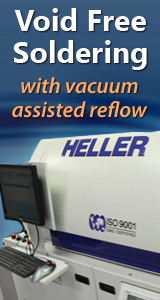Laserssel Co., LTD is pleased to introduce its CLSR 6000 high-end Laser Compression Bonder for semiconductor packages. This soldering technique uses high accuracy compression tools and Area Laser bonding introduced with LSRTM(Laser Selective Reflow) in order to minimize warpage on extremely thin packages and substrates. This technology has been adopted for high-end 2.5D packaging with dimensions larger than 60x60mm and NAND modules thinner than 50 µm.
LCB is able to produce thin and large semiconductor packages with very high production yields at low cost that are now considered to dominate technology trends of top tier semiconductor and packaging providers.
The BSOM (Beam Shaping Optical Module) patented industry-leading technology takes the energy of a spot laser and turns it into a uniformly distributed area laser. The uniformity of the energy is greater than 95 percent. This means that the energy of the spot laser is spread out evenly allowing for the same amount of energy density over the entire area to be soldered. This enables the proper coalescence, wetting, intermetallic formation to take place, forming the final electronic interconnect or solder joint. Laserssel designs and manufactures this technology in-house.
With its extensive knowledge in laser technology and expertise in process technology, Laserssel is well positioned to help customers to solve problems in the space of packaging and assembling the next generation of electronic devices. For more information, visit www.laserssel.com.
Laserssel Corporation is a leading provider of laser selective soldering technology supporting global semiconductor, automotive, consumer, communications, military and industrial segments. As a pioneer in selective soldering segments, Laserssel has provided customers with unique soldering capabilities to allow to solder on heat sensitive substrates that were considered to be impossible to reflow. Laserssel is now expanding its product offerings in advanced packaging, plastic and organic substrates, very thin substrates with concern of warpage and any other challenges that were difficult, if not impossible, in conventional reflow process.







